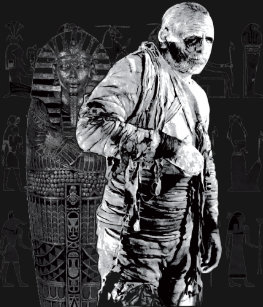Creatures
that Lurk from Beyond
 The graveyard the name sends chills
up the spine of any who consider visiting it, day or night. Many stories are told
around a village or town about who or
what is buried there, powerful heroes and
treasure to fit them; however, the tales
also contain stories of lights floating mysteriously around a certain grave or of
ghastly figures prowling over the grounds.
The graveyard the name sends chills
up the spine of any who consider visiting it, day or night. Many stories are told
around a village or town about who or
what is buried there, powerful heroes and
treasure to fit them; however, the tales
also contain stories of lights floating mysteriously around a certain grave or of
ghastly figures prowling over the grounds.
A graveyard is an area near cities,
towns, and villages that lends itself to
adventure. By definition, a graveyard is a
burial place for the deceased, but this is
very vague. For technical purposes, the
term graveyard has been given two
separate identities:
First, typical burial grounds include the
town cemetery, rundown ghost towns,
ancient ruins, former battlefields, haunted
forests, and other possibly haunted areas.
The words possibly haunted are what
distinguish these burial grounds from the
other classification.
Second, evil-enchanted burial grounds
are limited to known evil-enchanted cemeteries, tombs, and crypts. These areas are
greatly known and feared for their evil
presence.
In either type of graveyard, there is a
chance for a random encounter. In any
graveyard, there will be two types of
creatures found: undead, whose presence
is expected, and living creatures, whose
occupations involve traveling near or
through graveyards, or whose habitats
might include the graveyard and its surrounding area. Typical graveyards are
commonly frequented by men, and are
thus good hunting grounds for hungry
creatures. Also, these graveyards make
great homes for unpleasant scavengers
since carrion abound here. As for the
haunting of these places, that’s only a possibility. In evil-enchanted graveyards,
the degree of evil is known and accepted
as fact. The evil nature of these places
provides an excellent shelter for their evil
inhabitants. The nature of the graveyard’s
surroundings tends to be evil; therefore,
summoning evil creatures would be much
easier from this base point.
Both sets of tables are divided into three
subtables: dusk, midnight, and dawn.
These tables are used to reflect the hour
of the day, and more importantly, the amount
of sunlight present at a particular hour.
The greatest factor involving light at
night is the moon. The amount of light
present during a full moon differs so
greatly from that of a new or half-moon
that included on each chart are the three
representative phases of the moon: half,
full, and new. The cycle used here is based
on a 28-day rotation; consider three nights
before and after the phase night to be included in that phase period. The use of
the moon’s phases is logically justified by
the fact that under a full moon certain
light-fearing creatures (such as vampires,
wights, and ghosts) would refrain from
venturing under it, while some creatures
(men, lycanthropes, demihumans)
wouldn't travel without such a light source
available. The differences between each
moon phase represents the light’s effect on
the creature's percentage of appearance.
To use the tables in this article, distinguish what type of graveyard is applicable,
find the table whose time is the closest to
the actual game time, and cross-index the
roll with the closest moon phase as explained previously.
Practical use of these tables can easily
enhance any gaming campaign which
includes outdoor adventures, since these
tables specialize in areas not thoroughly
covered in the DMG. Be prepared; don’t let
your players catch you six feet under!



